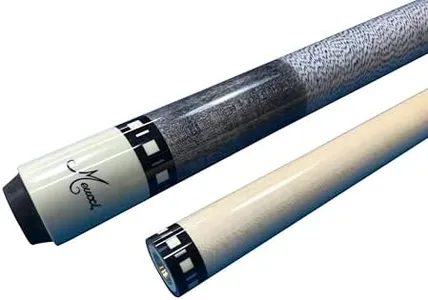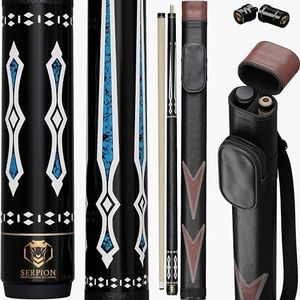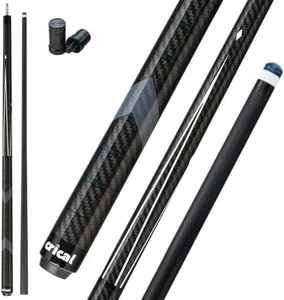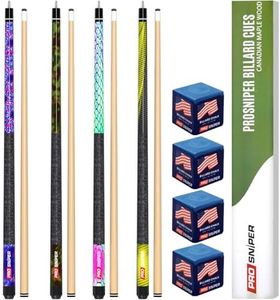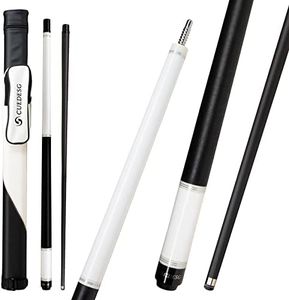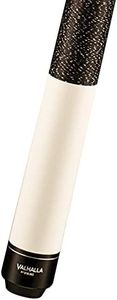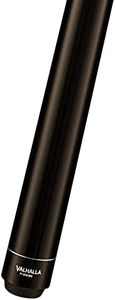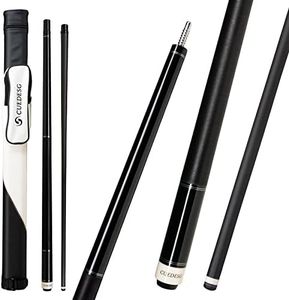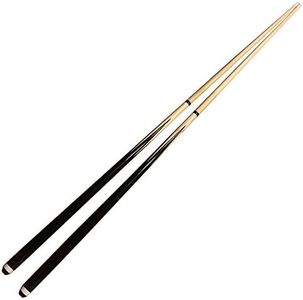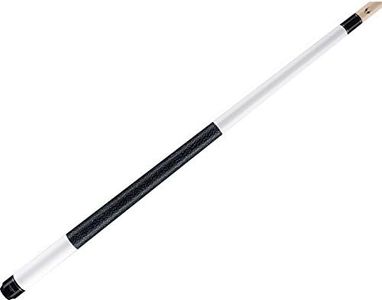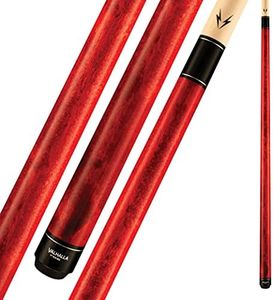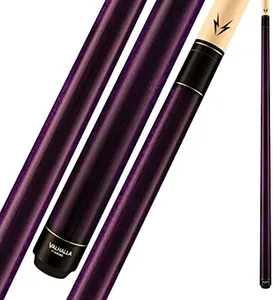We Use CookiesWe use cookies to enhance the security, performance,
functionality and for analytical and promotional activities. By continuing to browse this site you
are agreeing to our privacy policy
10 Best Cue Pool Sticks
From leading brands and best sellers available on the web.By clicking on a link to a third party's website, log data is shared with that third party.
Buying Guide for the Best Cue Pool Sticks
Choosing the right cue pool stick is about matching your skill level, playing style, and comfort preferences to the features of the stick itself. A good cue can enhance your control, accuracy, and enjoyment of the game. Take some time to understand how each specification affects your play so you can select a stick that feels natural and helps you perform at your best.LengthLength refers to how long the cue stick is from tip to butt. Most standard cues are about 57-58 inches long, but shorter or longer options exist. A stick that's too long or too short can be uncomfortable and affect your accuracy. Adult players usually do fine with a standard length, but if you're particularly tall, short, or buying for a child, you might need to adjust. Always make sure the cue feels balanced and allows you to use your natural stance comfortably.
WeightThe weight of a cue stick typically ranges from 17 to 21 ounces. Lighter cues (around 17-18 oz) are often preferred by players who like more finesse and control, while heavier cues (20-21 oz) can help generate more power and are sometimes chosen for breaking. Beginners usually find a weight in the middle comfortable, but your build and shooting style should guide your choice—if you have a lighter touch or play a lot of finesse shots, a lighter cue may suit you better, while a heavier one is good if you like powerful shots.
Tip SizeCue tips usually range from about 11 to 14 millimeters in diameter. Smaller tips (11-12 mm) offer more spin and control, which can be great for advanced shots but require more skill. Larger tips (13-14 mm) provide a bigger contact area, making it easier for beginners to hit the cue ball accurately. For most people, a mid-size tip (12.5-13 mm) offers a good balance between control and forgiveness, unless you have a specific style in mind.
MaterialCue sticks can be made from materials like maple, ash, fiberglass, or even carbon fiber. Maple is the most common choice for its strength and smooth feel, while fiberglass and carbon fiber resist warping and offer durability, which is handy for casual players or humid environments. Ash is more common in snooker than pool, but some players prefer its distinct grain. Choose a material that balances feel, durability, and maintenance for your situation.
Wrap/GripThe wrap, or grip area, is where your back hand holds the cue. Options include linen, leather, rubber, or no wrap at all (bare wood). Linen and leather offer good traction and comfort, while rubber grips help prevent slipping if your hands get sweaty. No wrap provides a solid, traditional feel but can get slippery. If you tend to have sweaty hands or like a certain texture, consider this when picking your cue.
Joint TypeThe joint is where two-piece cues screw together, and it can be made of materials like metal or wood with various connection methods. A solid joint offers a sturdy feel and good cue feedback. Metal joints provide durability and a harder hit, while wood joints feel slightly softer and more traditional. Let your preference for how the cue feels and assembles guide your choice, especially if you'll be taking your cue apart often for transport.
